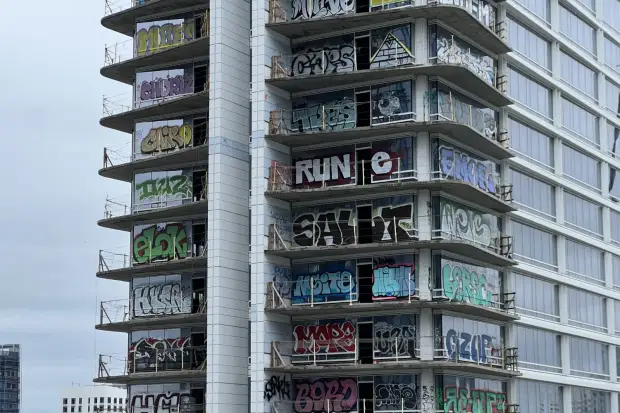Abandoned LA Skyscraper Transformed Into Graffiti Tower
A couple days before the Grammy Awards lit up the stage at Crypto.com Arena in Los Angeles on Sunday, February 4, more than a dozen people climbed into one of the abandoned Oceanwide Plaza skyscrapers directly across the award show’s venue and covered the windows in graffiti, according to The New York Times. The Oceanwide Plaza project has been sitting vacant since 2019 when the developer’s funds ran dry, and rebellious community members ventured to publicly protest the structure’s continued negligence just in time for the exclusive music industry event. Once intended to become a combination of luxury apartments, retail shops and a hotel, the 27-storey tower is now decorated with colorful tags. “This is people taking it upon themselves to use a space that in many ways was abandoned by people with money and power," said professor and cultural geographer Stefano Bloch.
Stolen Chagall Returns to Its NYC gallery
After the theft of a $100,000 lithograph entitled Eve (1971) from Carlton Fine Arts’ at the end of September, the stolen work by early modernist Marc Chagall has unexpectedly made its way back home. Their getaway may have been unglamorous, tossing the piece into the backseat of a slightly beat-up 1996 Honda Accord, but the three responsible perpetrators were able to remain off of police radar for the few months that followed the 2 am break-in. Even though one of the suspects involved remains unknown, the artwork has returned to the Madison Avenue gallery and has since then been put back on display. This return comes just a few weeks after another stolen Chagall painting was recovered by Belgian police.


























